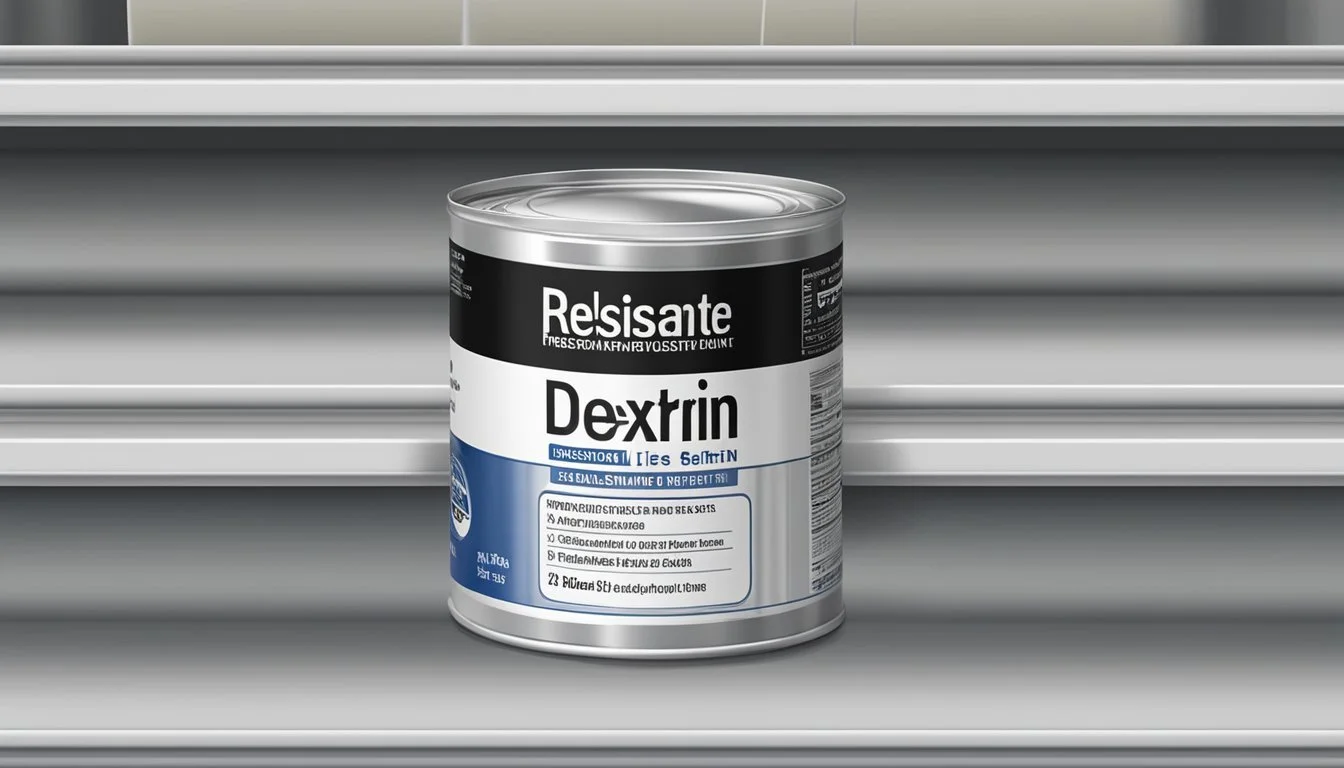How Long Does Canned Resistant Dextrin Last?
Understanding Shelf Life and Storage Tips
Resistant dextrin is a form of soluble dietary fiber known for its prebiotic effects and health benefits. As a non-digestible carbohydrate sourced from corn or wheat starch, it plays a crucial role in fostering a healthy gut environment by supporting the growth of beneficial bacteria. The stability of resistant dextrin as a product, particularly when canned, is a question for consumers interested in long-term storage and the preservation of its healthful qualities.
When it comes to shelf life, canned resistant dextrin mirrors the durability typical of canned goods, owing to the airtight and sterilized packaging process. The physical properties of resistant dextrin contribute to its longevity. Being a highly stable molecule, it resists degradation under a variety of conditions. This inert nature makes it less susceptible to spoilage and, as such, a reliable fiber supplement that retains its prebiotic function over an extended period.
The expiration of canned resistant dextrin typically extends for years, provided that the can remains unopened and stored in ideal conditions away from extremes of temperature and direct sunlight. This resilience ensures that the fiber retains its potential health benefits, such as improving digestive health and glycemic control, without significant loss in quality. Consumers can confidently incorporate canned resistant dextrin into their diets, knowing it will be both an effective and long-lasting dietary enhancement.
Understanding Resistant Dextrin
Resistant dextrin is gaining traction in the world of dietary fibers due to its versatile health benefits and production from renewable sources. This section explores the technical composition and manufacturing methods of this unique dietary component.
Definition and Properties
Resistant dextrin is a type of water-soluble dietary fiber recognized for its resistance to digestion. Unlike typical dextrins, which are easily broken down by human digestive enzymes, it remains largely intact throughout the digestive process. Its chemical structure contains glucose units linked by bonds that include β-1,6, β-1,2, α-1,6, and α-1,2, contributing to its resistance. As a soluble fiber, it exhibits prebiotic properties, which means it can promote the growth of beneficial gut bacteria.
Characteristics of Resistant Dextrin:
Solubility: Highly water-soluble
Digestive Resistance: Sustains through the upper GI tract
Prebiotic Nature: Supports gastrointestinal health
Sources and Production
The primary source for producing resistant dextrin is corn, though it can also be derived from other starch-rich grains. The production process utilizes enzymatic hydrolysis, where enzymes like α-amylase or glucoamylase break down cornstarch into shorter glucose chains that form resistant dextrin. This enzymatic treatment, under controlled conditions, alters its digestibility and solubility features, tuning its function as a prebiotic fiber supplement.
Key Steps in Production:
Dextrinization: Starch is degraded with acid and heat.
Enzymatic Hydrolysis: Enzymes further process the starch into shorter glucose chains.
Purification: The resulting dextrin is purified for use as a dietary fiber.
Health Implications
In considering the health implications of canned resistant dextrin, it is important to delve into specific areas such as gut health, weight management, and the regulation of blood sugar and lipid levels, as well as the role it plays in nutrient absorption. These factors collectively contribute to its potential benefits in improving overall health.
Gut Health and Microbiota
Resistant dextrin plays a significant role in the health of the gut microbiota. This dietary fiber escapes digestion in the small intestine and enters the large intestine, where it promotes the growth of beneficial bacteria. Enhancement of gut microbiota can lead to improved gut health and may help in reducing the risk of metabolic syndrome. Studies have shown that consistent intake of resistant dextrin can positively influence the intestinal gas homeostasis and support a balanced microbiome composition.
Weight Management
The consumption of resistant dextrin has been linked with weight management, particularly in overweight individuals. This soluble fiber may aid in weight loss by promoting satiety, reducing body fat and potentially decreasing visceral fat accumulation. As a result, it could be a helpful component in the diets of those looking to manage obesity or avoid becoming overweight.
Blood Sugar and Lipid Levels
Resistant dextrin has demonstrated blood sugar control and improvement in blood lipid levels. It can moderate glycemic responses, beneficial for individuals with type 2 diabetes, and has shown potential in lowering overall cholesterol levels. These benefits point towards its capacity to support patients with insulin resistance and enhance cardiovascular health.
Nutrient Absorption
The presence of resistant dextrin in the diet may influence the absorption of key minerals such as calcium, magnesium, zinc, and iron. By altering the gut environment favorably, it can enhance the uptake of these nutrients, which are essential for a wide range of bodily functions, including bone health and immune system performance.
Scientific Research
Current scientific research on resistant dextrin has focused on its health benefits, particularly its effects on gut health through fermentation by gut microbiota.
Clinical Studies and Reviews
Scientists have conducted various clinical studies to investigate the role of resistant dextrin in human health. One such study involved continuous administration of resistant dextrin over a four-week period to healthy subjects. This systematic review observed notable effects on intestinal gas production and digestive sensations, providing valuable insights into the physiological actions of fibrous supplements on digestive well-being. Moreover, reviews and studies commonly explore the health benefits associated with resistant dextrin, such as improved glycemic response and potential to prolong satiety without causing serious side effects.
Gut Microbiota Research
Research on gut microbiota underscores the significance of microbiota fermentation in relation to dietary fibers like resistant starch. Resistant dextrin plays a vital role in this process due to its resistance to hydrolysis by digestive enzymes, making it a substrate for fermentation in the colon. This action is instrumental in supporting gut health, with studies revealing that resistant dextrin can modify gut microbiota composition and metabolism. Such modifications have a ripple effect on overall health, as the gut microbiota is pivotal in numerous physiological processes.
Dietary Considerations
When incorporating resistant dextrin into one’s dietary regimen, it is important to understand its role as a source of dietary fiber with prebiotic properties, and the recommended supplementation practices.
Inclusion in Diet
Resistant dextrin, classified as a prebiotic dietary fiber, is a glucose polymer that resists digestion in the small intestine. Inclusion of resistant dextrin in the diet helps to support gut health. Foods that naturally contain dietary fibers—nuts, seeds, beans, rice, and potatoes—complement the high fiber content provided by resistant dextrin. These foods can align with both a standard diet and a high-fiber diet, and should be chosen based on individual nutritional needs and dietary preferences.
Supplementation and Dosage
As a fiber supplement, resistant dextrin can be added to the diet to reach the desired intake of dietary fiber, particularly when it is challenging to consume sufficient fiber through food alone. The proper dosage of resistant dextrin fiber supplement should adhere to clinical guidelines to avoid gastrointestinal distress. Generally, starting with a low dose and gradually increasing it is advised to allow the body to adjust. Accurate dosing is crucial and should be individually determined, considering factors like the presence of a high-fat diet or specific health goals related to its prebiotic properties.
Storage and Shelf Life
When considering the longevity of canned resistant dextrin, one must prioritize proper storage conditions. These conditions directly impact the fiber's quality and shelf life, ensuring both safety and maintenance of quality over time.
Proper Storage Conditions
The quality and safety of canned resistant dextrin largely depend on how it is stored. Ideal storage conditions include:
Temperature: Store canned resistant dextrin in a cool, dry place, with a stable temperature ideally below 70°F (21°C).
Humidity: Avoid areas with high humidity to prevent can corrosion.
Light: Keep cans away from direct sunlight as it can cause deterioration of the can and its contents.
Canned Resistant Dextrin Shelf Life
The shelf life of canned resistant dextrin is influenced by the factors outlined above. Typically, canned fiber products can maintain quality for:
Time Frame: Up to two years when unopened and stored under optimal conditions.
It's important to note that while safety may not be compromised after this period, the quality—referring to taste, texture, and nutritional value—might gradually decline. Consumers are advised to check for:
Integrity: The can should be free of rust, dents, or swelling.
Labels: Expiration dates, although indicative, should not be the sole criterion for safety; the state of the can and storage history are equally crucial.
Safety and Side Effects
Consumers often consider the safety profile and potential side effects when incorporating resistant dextrin into their diets. This section explores digestive tolerance and the possible long-term health impacts of this dietary fiber.
Digestive Tolerance
Resistant dextrin is generally well-tolerated in the digestive system, especially when consumed within recommended amounts. Clinical research indicates that it can enhance satiety without causing significant bloating or gas. However, some individuals may experience mild digestive discomfort, including constipation or diarrhea, typically associated with any dietary fiber intake as the body adjusts.
Gas production: Normal to mild increase, usually subsiding with regular use
Satiety: Can contribute to a feeling of fullness, aiding in weight management
Regularity: May improve bowel movements, benefiting overall digestive health
Long-term Health Impact
The long-term consumption of resistant dextrin has been perceived as safe, with few adverse effects reported in human studies. It is a non-digestible carbohydrate that ferments in the colon, producing short-chain fatty acids, which are beneficial for colon health and may have a positive effect on the immune system. Furthermore, there is no solid evidence linking resistant dextrin with inflammation or adverse changes in blood pressure.
Short-chain fatty acids: Production associated with positive colon health and immune function
Blood pressure and inflammation: No direct adverse effects noted
It is important for consumers to adhere to appropriate dosing guidelines to minimize any potential discomfort and to consult with healthcare professionals regarding the integration of resistant dextrin into their diets, especially for those with pre-existing health conditions.
Regulatory Status
Understanding the regulatory status of canned resistant dextrin is essential for both consumers and manufacturers. Regulations often reflect the safety, health benefits, and allowable marketing claims of food ingredients such as fibers and prebiotics.
Approvals and Regulations
Resistant dextrin, classified as a soluble dietary fiber, maintains a status of Generally Recognized As Safe (GRAS) by the United States Food and Drug Administration (FDA). This status implies safety for consumption and acknowledges the potential health benefits and prebiotic properties of this ingredient. In Japan, resistant dextrin may be recognized under the Foods for Specified Health Uses (FOSHU) system, which approves foods with scientifically substantiated health benefits. The European Food Safety Authority (EFSA) also evaluates and provides guidance on food additives such as resistant dextrin with regards to their safety and use in the food supply.
Labeling and Claims
The labeling of foods containing resistant dextrin must comply with regulatory standards. It should clearly indicate its presence as a food ingredient, and any health claims related to its dietary fiber content must be substantiated and approved by the regulatory authorities. For instance, the use of the trademark NUTRIOSE®, which is a form of resistant dextrin, on labels also requires adherence to specific regulations regarding health claims. In the context of its prebiotic properties, claims may be made if fully supported by clinical evidence and if they fall within the framework of approved statements by governing bodies like the FDA and EFSA.
Consumer Guidance
When selecting a fiber supplement like resistant dextrin, consumers should consider its impact on dietary fiber intake, weight management, and glycemic response. Proper usage and expectations are key to integrating these supplements effectively into one’s diet.
Selecting a Fiber Supplement
Consumers should look for fiber supplements that have a clear labeling of ingredients and dosage recommendations. Resistant dextrin, commonly found in products like Benefiber, is a soluble fiber that acts as a prebiotic, aiding in digestion and potentially supporting weight management efforts. When choosing a fiber supplement, one must ensure it complements their individual health goals, such as appetite regulation or the management of blood sugar levels.
Appetite Regulation: Soluble fibers like dextrin can help regulate appetite, which might be beneficial for those addressing obesity.
Glycemic Response: Soluble fiber has been known to moderate glycemic response, making it a prudent choice for those monitoring their blood sugar.
Usage and Expectations
The correct dosage of a fiber supplement is critical for achieving desired health outcomes. Consumers should adhere to the manufacturer's guidelines for dosage to maintain optimal efficacy. Typically, a common dosage of resistant dextrin ranges from 3g to 5g per serving.
It's essential for consumers to have realistic expectations regarding the benefits of fiber supplements. While they can support weight management and improve glycemic control, they are not standalone solutions and should be part of a holistic approach, including a balanced diet and regular exercise.
Weight Management: A fiber supplement can be one component in a larger strategy for managing weight.
Glycemic Control: Those looking to maintain healthy blood sugar levels might notice an improvement with regular intake of a fiber supplement as part of a consistent diet.
Emerging Trends and Future Research
This section explores the innovative strides in fiber supplements and identifies pivotal areas that could benefit from further scientific inquiry.
Innovations in Fiber Supplements
The fiber supplement market is witnessing a surge in technological advancements. Innovations are primarily focused on enhancing health benefits such as improving the glycemic response and reducing inflammation. Researchers are now creating resistant dextrin formulations designed to be more efficacious in regulating blood glucose management and potentially lowering cholesterol levels. Another notable trend is the development of supplements that can optimize the production of bile acids, which may have far-reaching effects on lipid metabolism and overall health.
Potential Areas of Study
Several specific areas promise fruitful research opportunities:
The prebiotic effects of resistant dextrin on the gut microbiota and how these changes impact chronic diseases associated with inflammation.
Long-term studies to explore how resistant dextrin supplementation may affect cholesterol levels when incorporated into various diets.
Investigations into the role of resistant dextrin in glycemic response modulation to develop more nuanced dietary recommendations for individuals with diabetes or at risk of developing diabetes.
By focusing on these areas, the scientific community can offer more targeted and effective fiber supplements to consumers looking to improve their health through nutrition.











